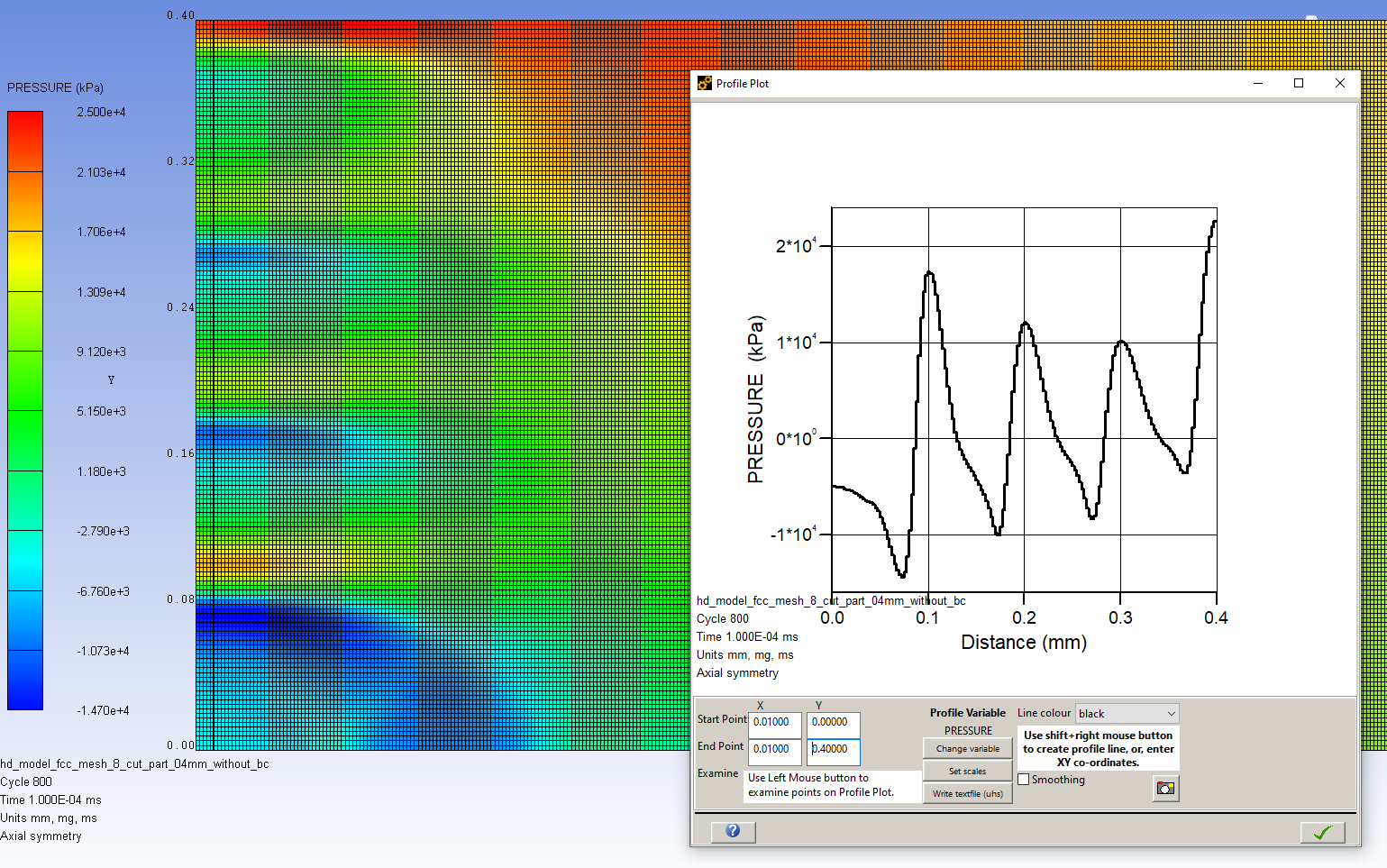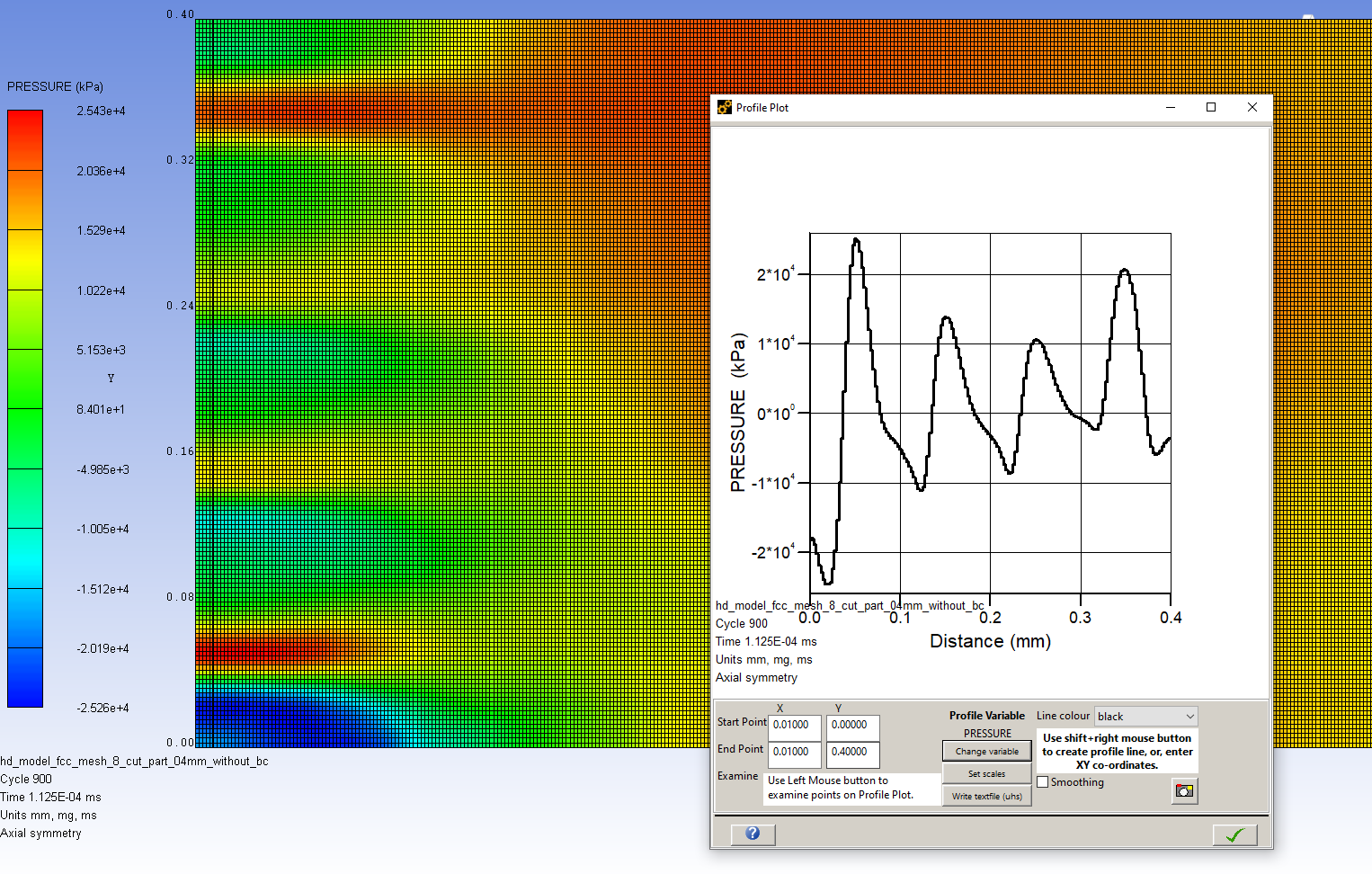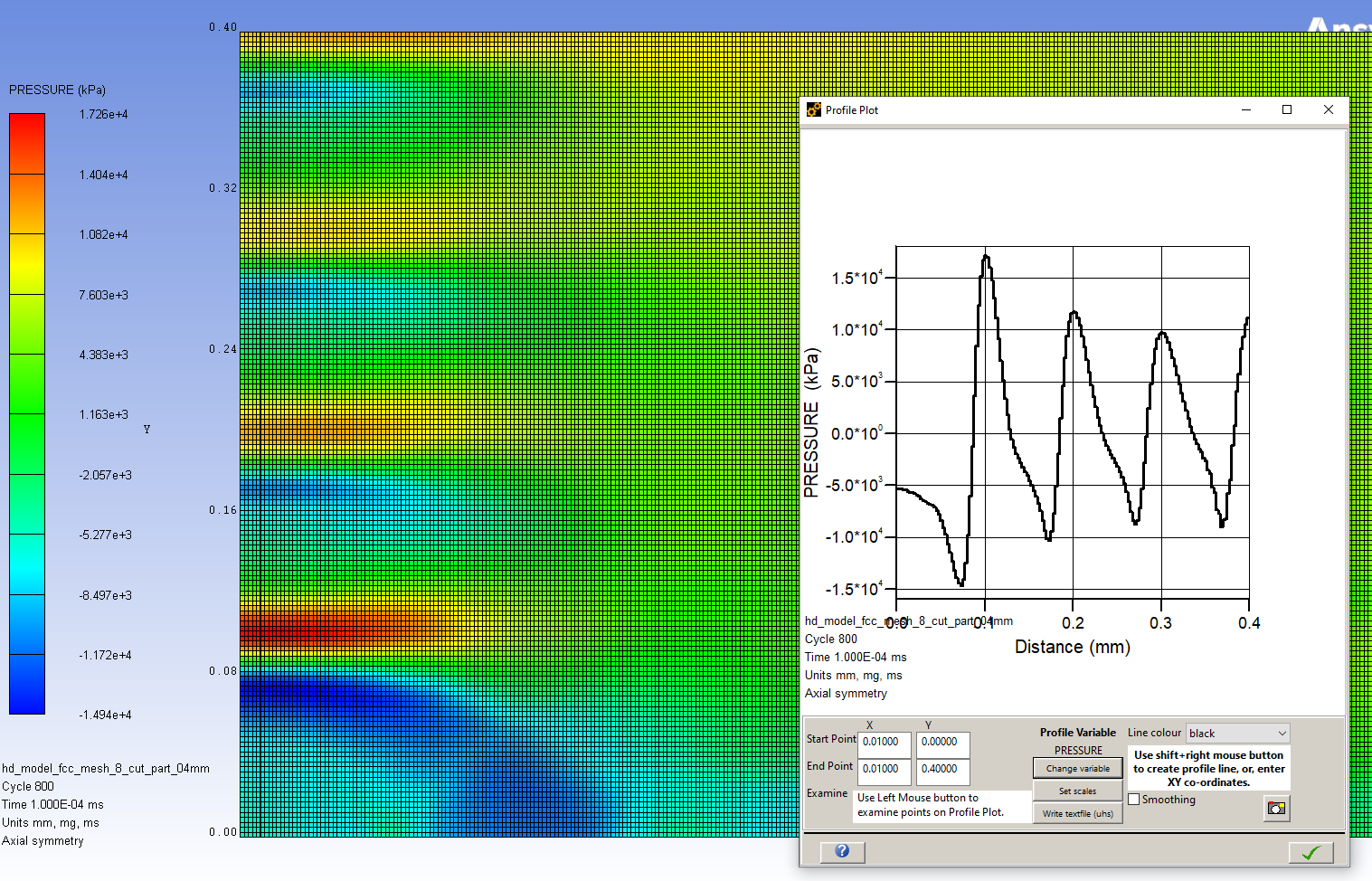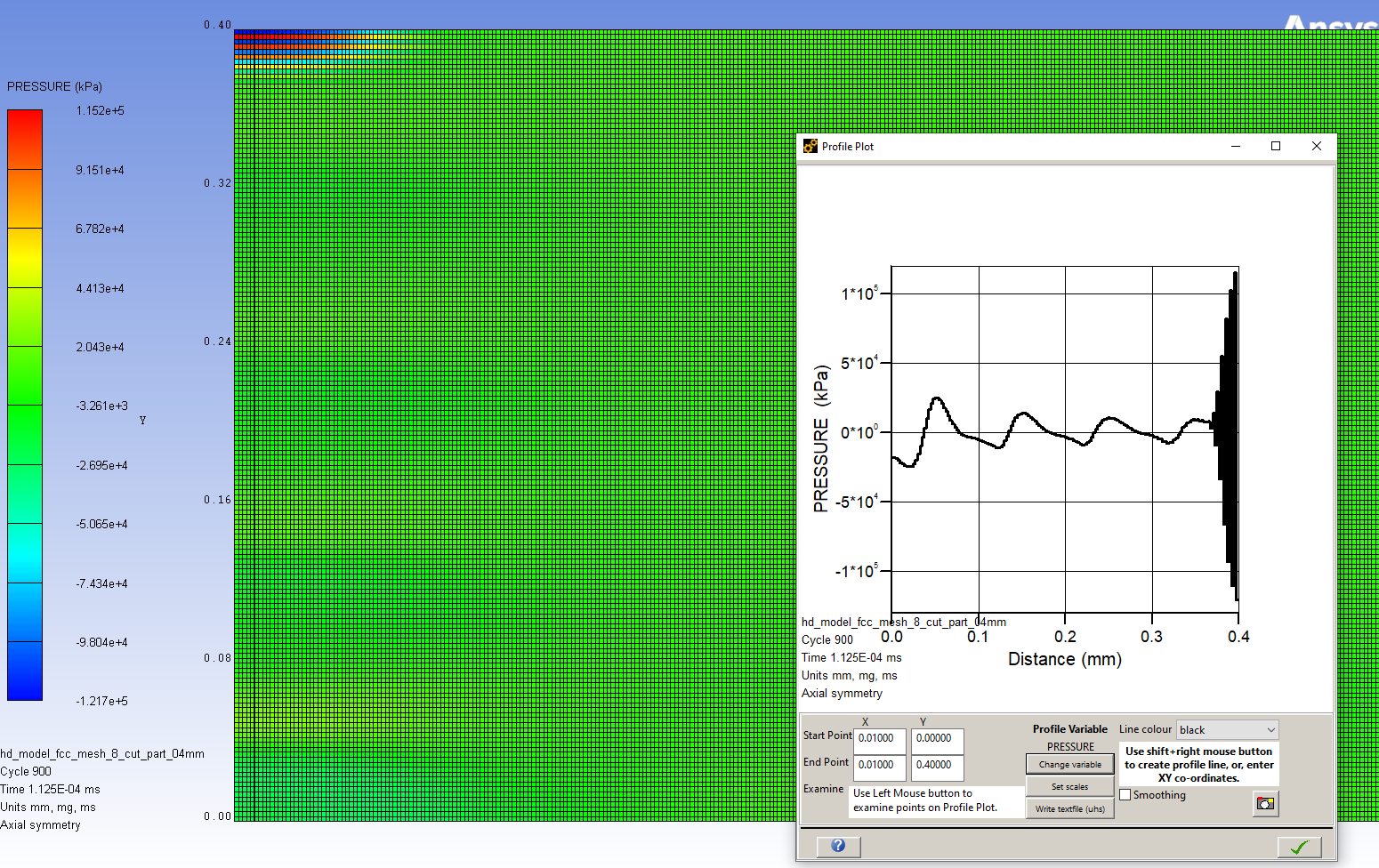TAGGED: ansys-autodyn, boundary-conditions
-
-
December 12, 2024 at 8:08 am
audrey.piccini
SubscriberDear all,
I am using Ansys Autodyn 2023 R2 to simulate the impact of an energy beam.
For this simulation I am using an Eulerian mesh, no failure or strength model, and I apply only one boundary condition at the upper radius (0.4mm cf. images) which is "Transmit (Euler/Lagrange)". All references in the boundary definition are set to zero.
I do not understand why my pressure wave is disturbed by this boundary condition. Should it not allow the wave to pass through as if the material were continuous?
Below is a comparison of the results obtained without the boundary condition (total reflection of the wave) and with the transmit condition (creation of a disturbance with a large amplitude).
How can I solve this problem without enlarging my part?
Thank you for your help,
Audrey
-
December 13, 2024 at 9:43 am
Erik Kostson
Ansys EmployeeHello
Not sure I can help with this, but could you explain what you are trying to do?
What is the actual model and what you would like to study and find out from your analysis?
So some background to this, and perhaps I can advice for alternatives.
All the best
Erik
-
December 16, 2024 at 3:36 pm
Chris Quan
Ansys EmployeeFor multi-material Euler solver, usually Flow Out boundary condition is used. Can you try the Flow Out BC to see if you still observe the large oscillations of pressure near the boundary? Make sure the correct material is selected for flow out or set it to ALL Equal.
For impact simulations, it is OK to observe a rarefaction wave after the initial compressive wave.
From the profile picture included in your description, I estimated that the sound speed of the material exceeds 10000 m/s, which seems large to me. Can you carefully check the material properties in your model to make sure they are accurate?
-
December 18, 2024 at 3:14 pm
audrey.piccini
SubscriberHi Chris, hi Erik,
Thanks for you reply.
The goal here is to model the impact of an energy beam. I am using a sub-routine to input a FLUKA (energy deposition code) map at the beginning of the simulation. We are interested in monitoring how far the beam penetrates the target.
I tried with the "Flow Out" boundary condition + Sub option "Flow out (Euler)" + Preferred Material "the target material" but I obtained excatly the same results as in the simulation without any boundary conditions.
Yes, I checked and the soundspeed of the material is well defined, around 4100 m/s, which is the case here 0.4 mm / 1e-4 ms = 4000 m/s.
Thanks for your help,
Audrey
-
December 18, 2024 at 3:41 pm
Chris Quan
Ansys EmployeeActually, for compressible materials, its sound speed may not be a constant. It should be related to dp/dr, where p is pressure, r is density. You can do a contour plot of sound speed to check its magnitude.
If the problem still persist with new Flow Out BC, you need to extend the Euler domain.
-
December 21, 2024 at 10:32 pm
bhuttahasnain08
SubscriberDear Audrey,
It seems that the "Transmit" boundary condition in Ansys Autodyn is causing an issue due to the way it handles material interaction between Eulerian and Lagrangian grids. This can lead to discontinuities or disturbances in the pressure wave. You may need to refine your mesh near the boundary or consider an alternative boundary condition like "Absorbing" to mitigate wave reflection.
Best regards.
-
- You must be logged in to reply to this topic.



-
3427
-
1057
-
1051
-
896
-
892

© 2025 Copyright ANSYS, Inc. All rights reserved.











